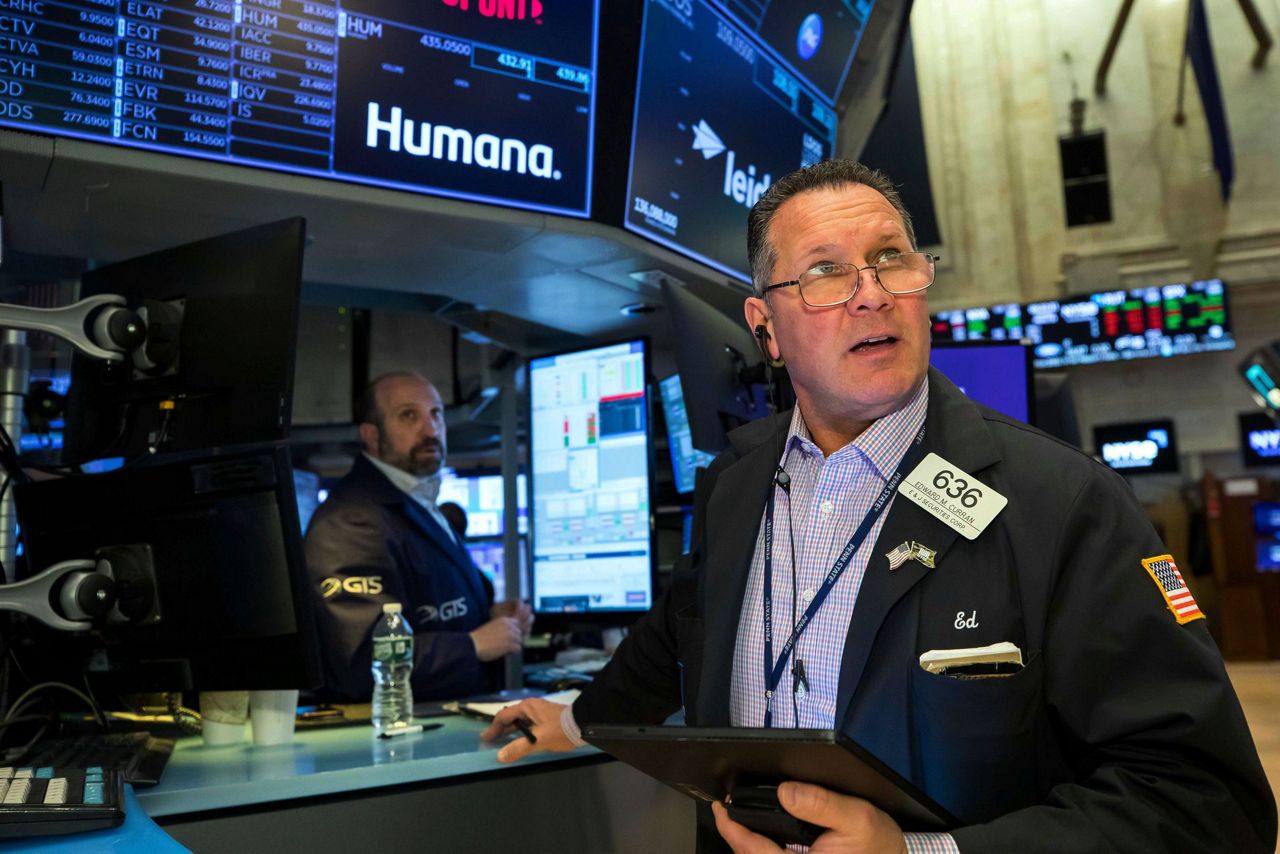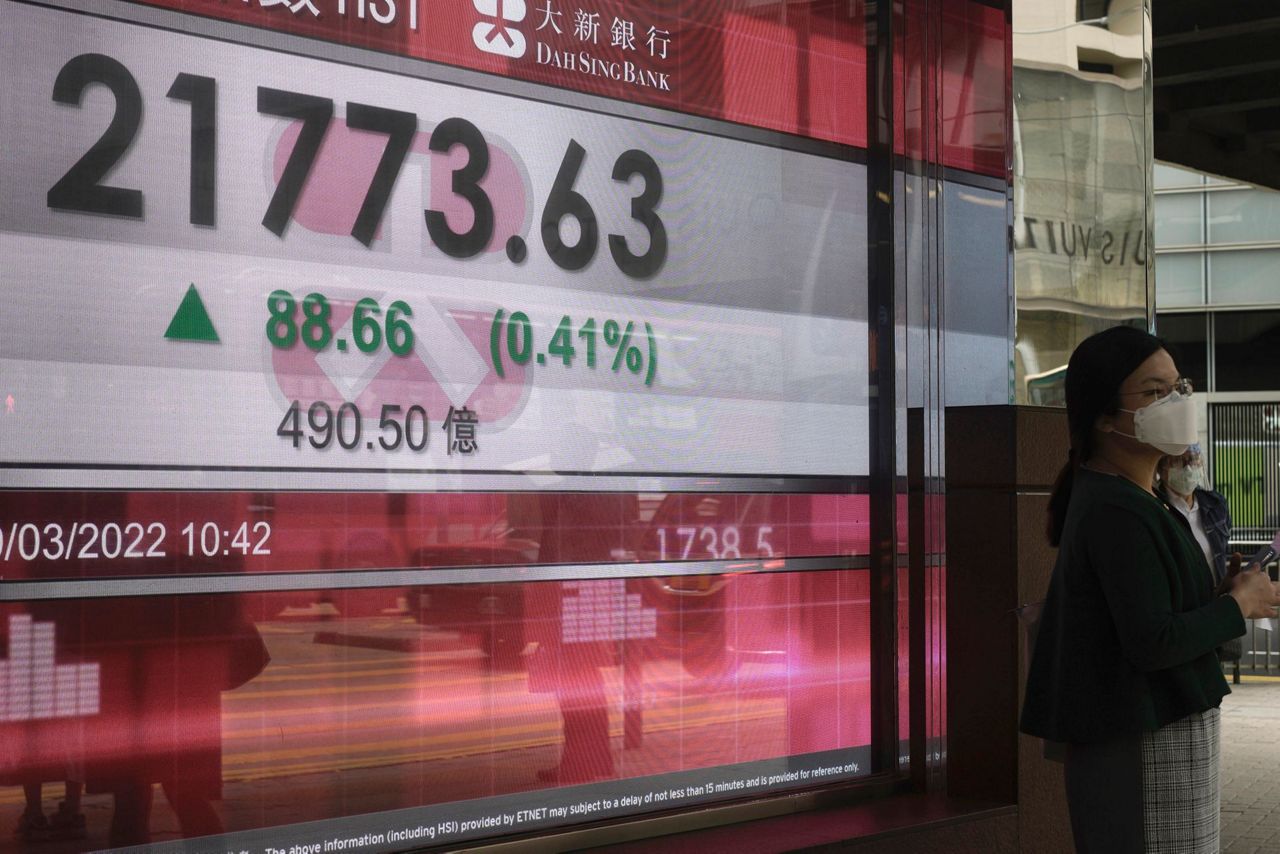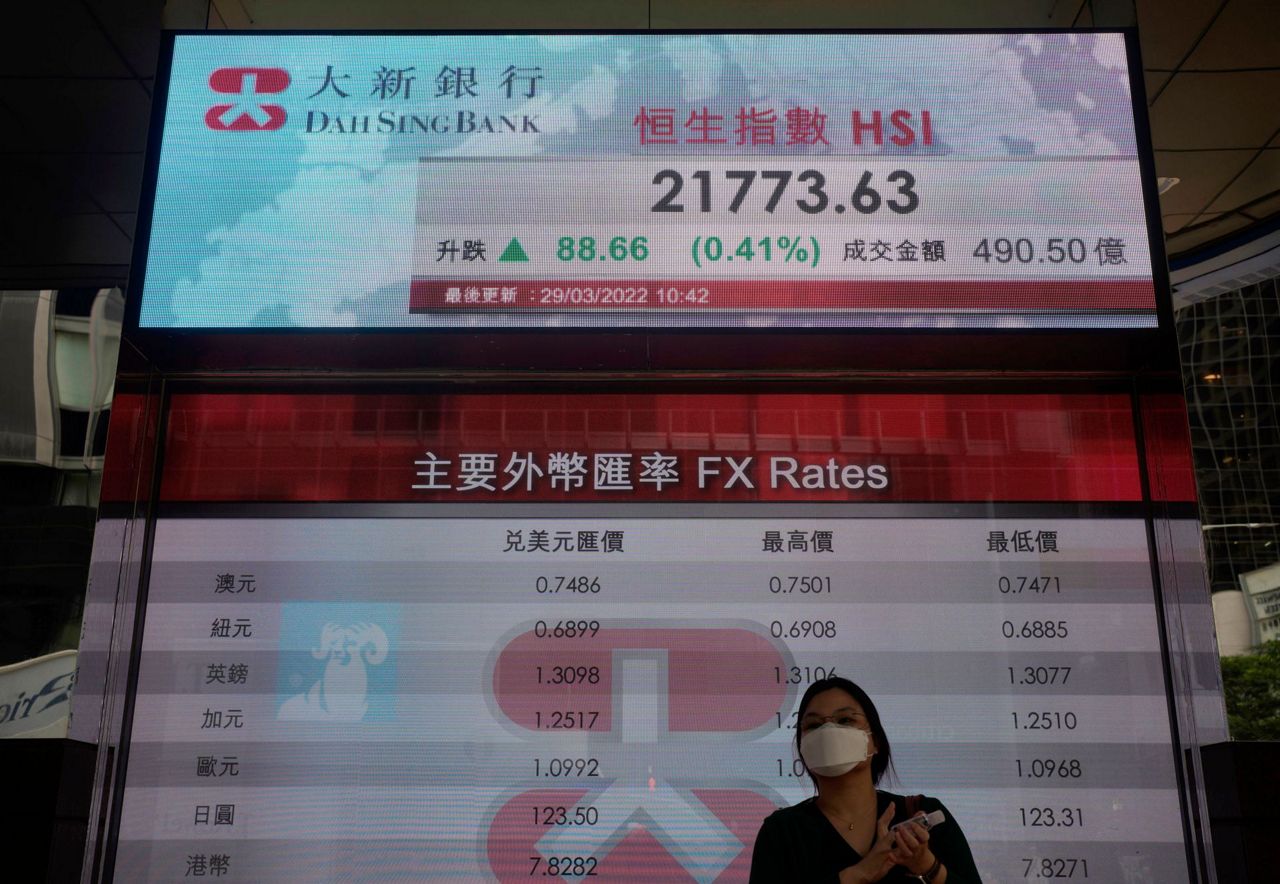Wall Street built on its recent gains and closed higher Tuesday as talks on ending the war in Ukraine showed signs of progress. The S&P 500 rose 1.2%, the Dow Jones Industrial Average rose 1% and the Nasdaq rose 1.8%. Technology and communications stocks led the gains. Energy stocks were lagging behind again as oil prices sank. Turkey’s foreign minister says Russian and Ukrainian negotiators have reached “a consensus and common understanding” on some issues and Russia said it is cutting back some operations. Treasury yields fell again. European markets were higher and Asian markets closed mixed overnight.
THIS IS A BREAKING NEWS UPDATE. AP’s earlier story follows below.
Stocks rose in afternoon trading on Wall Street Tuesday as talks on ending the war in Ukraine showed signs of progress.
The S&P 500 was up 1% as of 2:43 p.m. Eastern. The Dow Jones Industrial Average rose 256 points, or 0.7%, to 35,211 and the Nasdaq rose 1.7%. The indexes notched gains the past two weeks, despite choppy trading and volatile energy prices. The S&P 500 and Dow are on pace for a four-day winning streak.
Technology and communication stocks helped power the rally, along with big retail chains, automakers and other companies that rely on consumer spending. Apple rose 1.4% and Netflix was up 4.3%. Ford Motor climbed 6.4% and General Motors gained 4.9%.
Smaller company stocks outpaced the broader market in a sign that investors were confident about the economy. The Russell 2000 rose 2.4%.
The first face-to-face talks in two weeks between Russia and Ukraine began Tuesday in Turkey. Turkey’s foreign minister says Russian and Ukrainian negotiators have reached “a consensus and common understanding” on some issues. Russia’s military said it would “fundamentally” cut back operations near Ukraine’s capital and a northern city, as talks brought a possible deal to end a grinding and brutal war into view.
Russia's invasion of Ukraine has been unsettling markets and adding to lingering concerns about persistently rising inflation and global economic growth. Investors were already busy trying to determine the potential duration and impact of rising inflation on businesses and consumers when the conflict began a month ago.
“What we’ve seen over the course of last several weeks is capital markets have looked toward removing some of the worst case scenarios,” said Bill Northey, senior investment director at U.S. Bank Wealth Management.
Energy prices have been extremely volatile as the conflict continues, but have been easing over the last few days. Pressure on prices is also being relieved as Chinese authorities lock down Shanghai because of a surge in COVID-19 cases, which could crimp global demand for oil.
U.S. crude oil prices fell 1.6% and Brent crude, the international standard, slid 6.8%. Prices are still up more than 30% globally, but were up more than 50% as of just last week.
Falling oil prices weighed down energy companies, which had some of the biggest losses on Tuesday. Hess fell 0.9%.
European markets rose, while Asian markets closed mixed overnight.
The yield on the 10-year Treasury note, which influences interest rates on mortgages and other consumer loans, fell to 2.39% from 2.47% late Tuesday. It briefly dropped below the 2-year Treasury’s yield, what Wall Street calls an “inversion” of the Treasury yield curve. Investors take note of this because prolonged yield inversions have accurately predicted previous U.S. recessions. The 2-year Treasury yield was at 2.37%.
Bond yields had been rising as Wall Street prepares for higher interest rates after years of ultra-low interest policies from central banks around the world. The rate hikes are part of a strategy to help temper the impacts of rising inflation.
The Federal Reserve has already announced a 0.25% hike of its key benchmark interest rate and is prepared to continue raising rates.
Wall Street is also reviewing the latest economic updates this week. U.S. consumer confidence bounced back in March, according to a report from business research group The Conference Board.
The Commerce Department will release its February report for personal income and spending on Thursday and the Labor Department will release its employment report for March on Friday.
Copyright 2022 The Associated Press. All rights reserved. This material may not be published, broadcast, rewritten or redistributed without permission.






